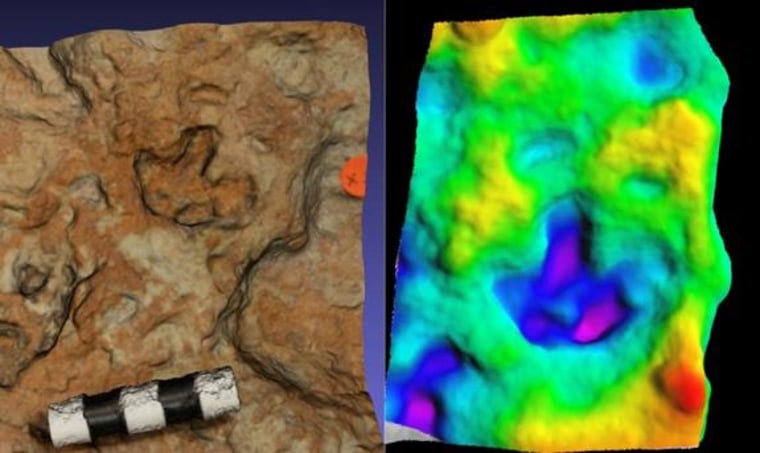Tiny tracks found in Colorado are so small that they could belong to a kitten. But these footprints actually belong to baby stegosaurs — the only such tracks ever found.
Now, those tracks, along with some from adult stegosaurs, have new life as a 3-D digital model that could help researchers identify other stegosaurus tracks and learn more about how these spine-backed beasts moved.
Sign up for top Science news delivered direct to your inbox.
"We can accurately gauge the depth, the topography of the track and understand how similar and different tracks are to each other," said study researcher Matthew Mossbrucker, director of the Morrison Natural History Museum in Colorado.
The model was made with a simple but relatively high-tech method called photogrammetry, in which computer software matches points on two-dimensional photos to build a three-dimensional model of the prints.
Photogrammetry is not a new technique. But until very recently, the process was "extremely cumbersome," said Heinrich Mallison, another study researcher and a vertebrate paleontologist at the Museum für Naturkunde in Berlin.Turning 2D photographs into a 3D model required laboriously matching points by hand.

"In recent years, the programs and the computers have improved so much that now we can calculate 10 million individual points in the time it used to take to calculate one," Mallison told Live Science.
The latest software for photogrammetry is so simple that Mallison's initial model of the stegosaurus tracks took a mere 12 minutes to complete.
"I was stunned by how fast his software and techniques created a basic model from snapshots taken with my iPhone," Mossbrucker said. He originally found the tracks in 2006 and 2007 in boulders that had been lining a roadway in the town of Morrison, Colorado, just a few miles west of Denver.
- Stephanie Pappas, Live Science
This is a condensed version of a story that appeared in Live Science. Read the entire article here. Follow Stephanie Pappas on Twitter and Google+. Follow us @livescience, Facebook & Google+.
- In Images: A Baby Dinosaur Unearthed
- Gallery: Dino Footprints in the Space Age
- Image Gallery: Dinosaur Daycare
Copyright 2014 LiveScience, a TechMediaNetwork company. All rights reserved. This material may not be published, broadcast, rewritten or redistributed.